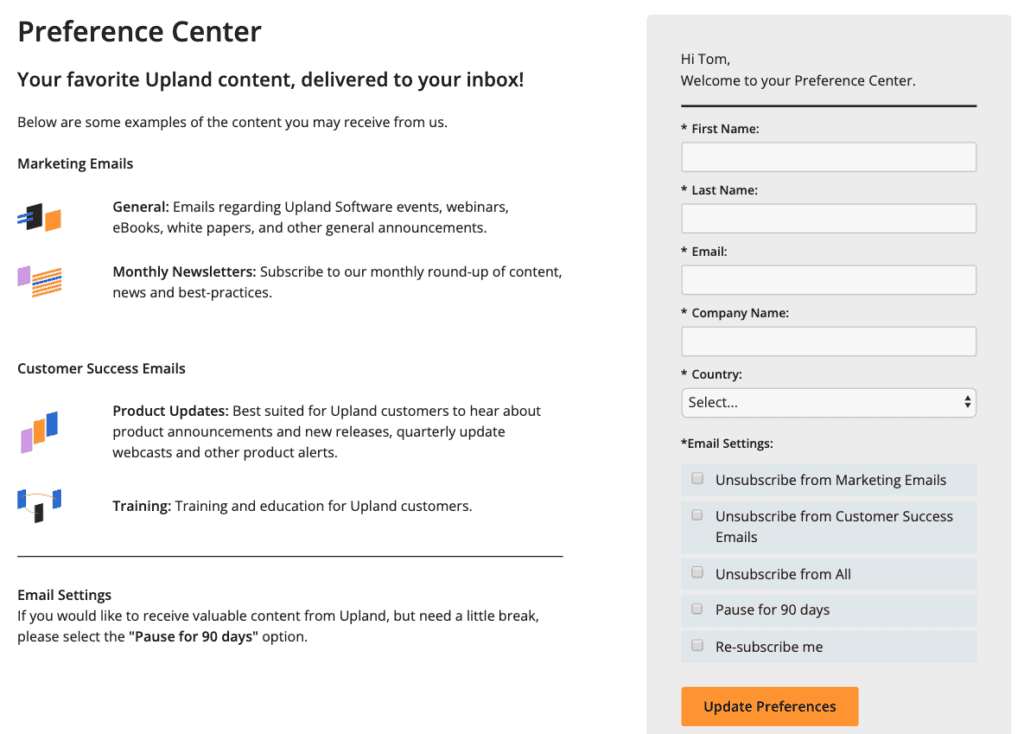When it comes to personal data, there is an increasing awareness of its value to businesses, the public, and consumers alike. You only need to look at the headlines to discover the news of another data breach, where troves of sensitive information are no longer in the hands of its rightful owner but those of criminal organizations looking to leak it or use it for their financial gain. Breaches that once seemed like they only belonged in the movies have brought home a reality to consumers about keeping their data close to their chest and ensuring that when they do share their data, they do so securely. There is also an expectation for organizations that come to own consumer data to use it wisely and only for the purpose they have agreed.
Give your audience confidence
What does this mean for your marketing? Well, it doesn’t mean to stop gating every piece of content you have in the fear that no one will ever fill out your forms and read the content you’ve worked hard to create. However, it does mean there needs to be a clear value exchange in the content, product, or service(s) they will receive when they hand over their data, and most importantly, there needs to be transparency and trust.
What makes a good preference center?
A good preference center is a place where audiences can go to let you know their interests and preferences. For Publishers, that might allow your audience to choose one or more publications to receive, I.e., interior design or fishing magazines. For a retailer, it might be highlighting the product range(s) they want to receive news about, or seasonal releases and communications about offers & discounts. Your preference center puts the power in the hands of your audience and gives them confidence in what they will get in return, and for you, it means building a clearer picture of their likes and dislikes.
What makes a great preference center?
As the digital inbox overflows from the subscriptions we once loved and then inevitably forgot about, consumers are becoming more selective with the content they receive, the way they receive it, and the frequency in which it comes through. A great preference center has the following attributes:
- It is easy to find(!). You might have a page dedicated to showing your audience what you have to offer, but if they cannot find it, you’ve fallen at the first hurdle. Include it in your communications, use it to re-engage sleepy subscribers, and make it clear on your website for new visitors.
- It covers the essentials. Information such as name, age, birthday, and gender allows you to segment at a basic and essential level. There is a fine line between asking too much and scaring potential subscribers away and not asking enough. Ensure you’re clear about the data you need to gather in order to deliver impactful communications to your audience.
- It is clear what you have to offer. In a world of abundant choice and increasing demand for simple and efficient user experiences, your audience needs to see the available content for them to choose from instantly. Think about the Netflix interface or YouTube’s home page, your recommendations are front and center, and it’s clear what is available to pick from as soon as you open them.
- It will offer a choice of channels to receive communications. Forcing your audience onto one channel of communication is a sure enough way to limit engagement. If you can send communications via social media, SMS, and email (or all of them), make the options clear during the subscription process. It could be the difference between someone signing up or exiting your site.
- Visitors have the ability to choose the frequency of communications. It’s essential to establish the frequency, so you don’t bombard your audience with communications if they only want to hear from you every other month. Conversely, you want to ensure you’re hitting the inbox of those who want regular updates. By giving your audience a choice, it satisfies their needs, and you’re on your way to effectively segmenting your lists. Giving options, including the ability to press pause on certain communications instead of opting out completely, for example, Father’s Day and Mother’s Day can be sensitive communications for some, not only gives your audience flexibility but shows you care about their needs.
- It is clear how to opt-out. Remember, there should be many paths leading to your preference center. It’s there for newcomers and existing list members. Not everyone will continue to want to receive your communications, and if they wish to opt-out it’s important you make it easy to do so. It might seem counterintuitive to make the decision to opt-out so easy but sending to audiences who don’t want your content will result in sender reputation issues, spam complaints, and deliverability issues. Make it as easy for users to opt out of your communications as you do to opt-in.
- It links to your ESP data. Most importantly, the information given needs to be reflected according to the fields/lists in your sending engine e.g., if someone opts out of hearing about honeymoon breaks from a travel company because they just got married, that needs to be reflected in your lists.
A successful preference center will benefit both you and your audience. For you, it boils down to getting hyper-targeted with your communications by asking preference center visitors for the correct data that will allow you to segment and personalize at a granular level. Your audience wants choice, they want to know where their data is and how it is being used, and by offering a great preference center, you’re on your way to not only showcasing you care about those requirements but also building a healthy relationship that has the potential to generate high engagement. You know what content they want; now you can start to deliver it.
I’ve got all this information, now what do I do with it?
The foundation of every great email program is well-maintained and detailed data. When you start to build this data from your preference center, the next step is to use it and use it wisely. With an understanding of your audience’s interests, frequency, and channel preferences you’re ready to segment your lists and build personal and targeted campaigns. When you know someone is interested in a particular subject area I.e., sport, you can send offers and content tailored to them to improve engagement, increase the chance of conversion, and ultimately turn window shopping visitors into long-term customers and subscribers.
You might have the picture-perfect preference center, but is your audience aware it exists, and are they engaging with your content? Whether your audience needs a gentle nudge, or sleepy subscribers need re-engagement, ‘5 Ways to Keep Your Email Subscribers Engaged’ has the tactics you need to generate impactful and engaging email campaigns.


